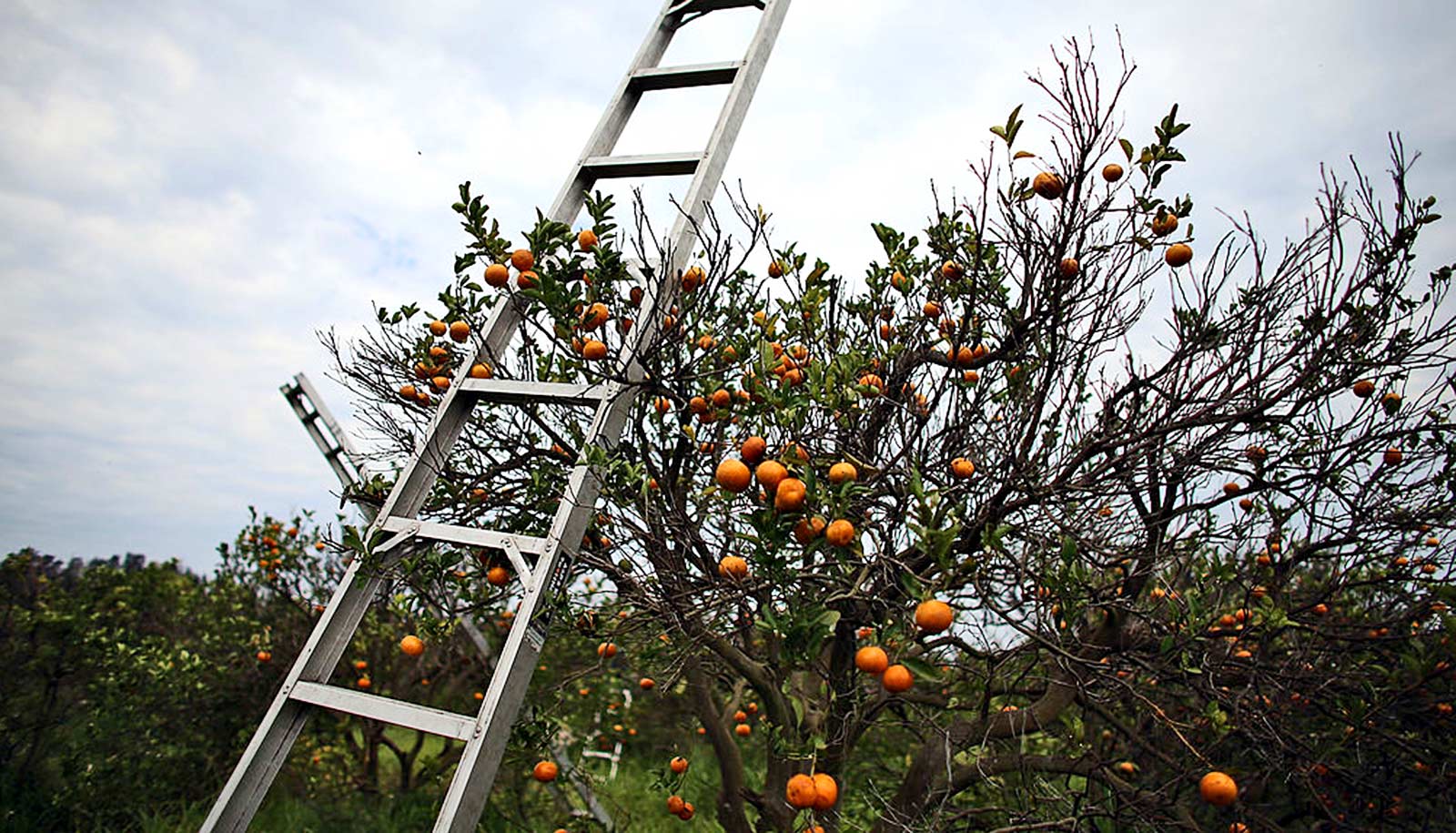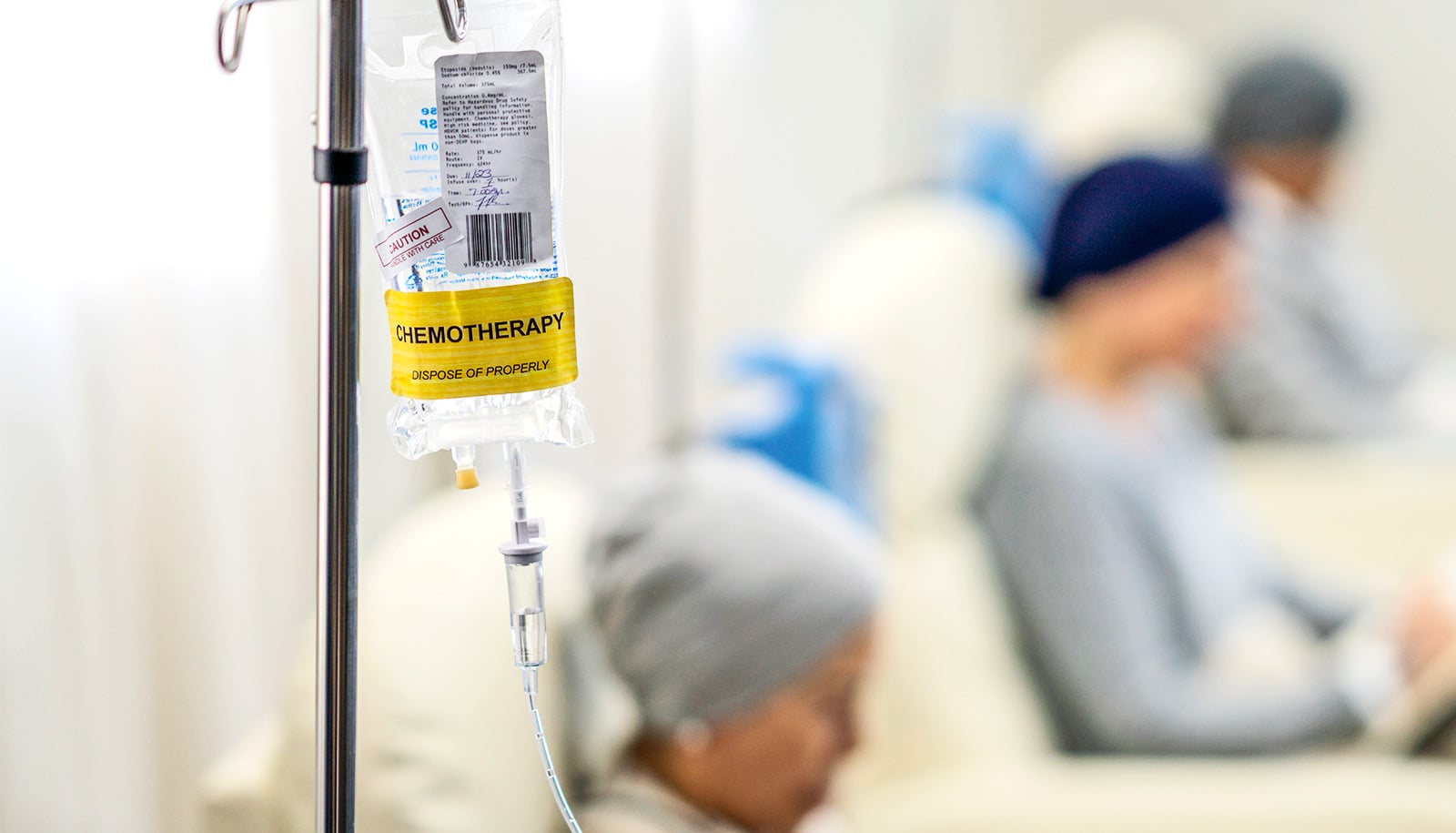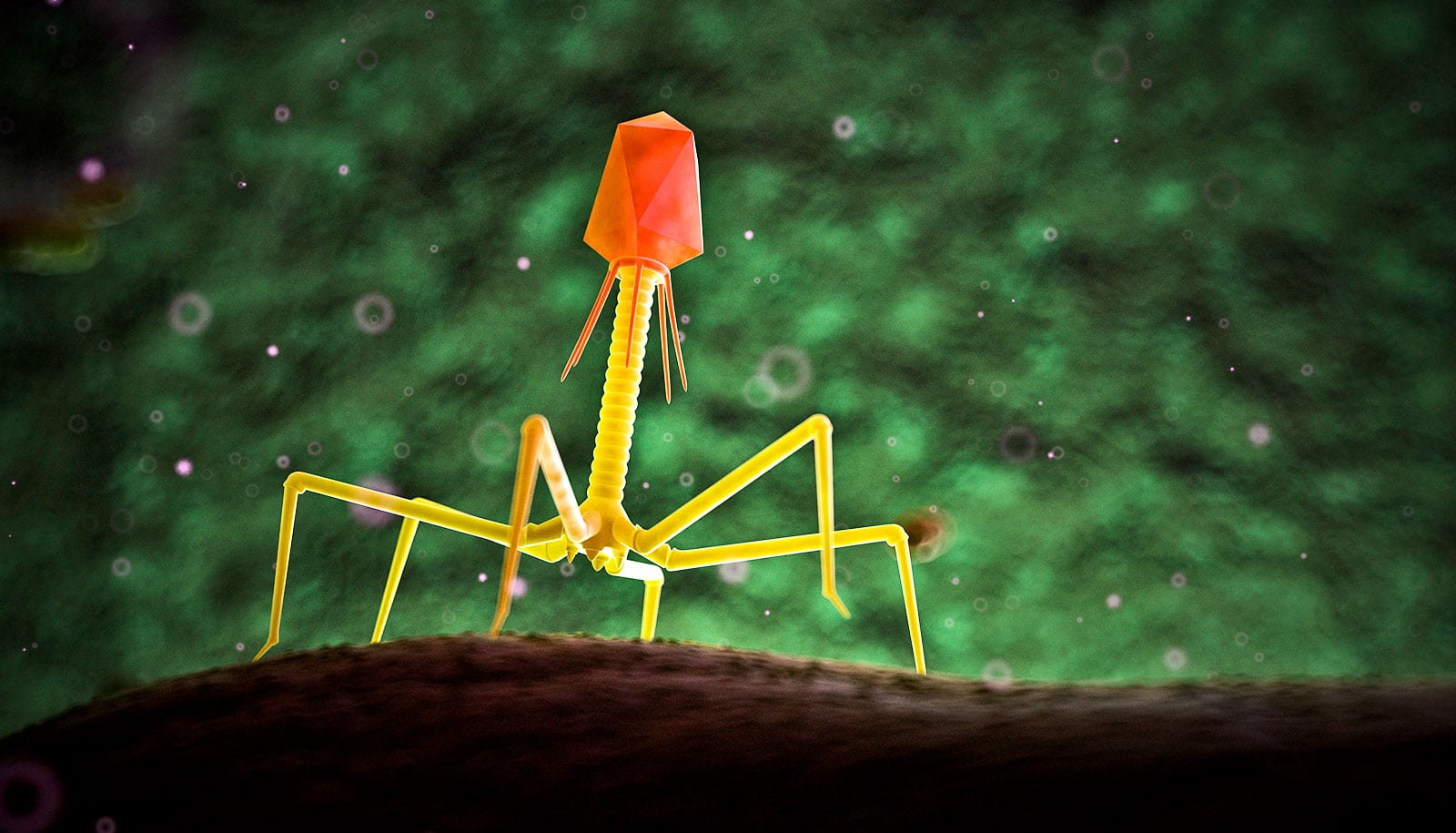Scientists have developed a new way of finding potential treatments for citrus greening, and a short list of 130 compounds to explore further.
Biologist Sharon Long has published over 150 papers on the symbiotic bacteria that help alfalfa grow. But when she realized her lab’s highly focused research could contribute to a solution for citrus greening—a disease that devastates citrus crops—she was inspired to go in a new direction.
“I’m only two generations off a farm, and I read about citrus farmers losing their livelihood and land, and thus also losing generations of family tradition,” says Long, professor in biological sciences at Stanford University. “We decided to redirect our efforts to work on this problem because we wanted to make a difference.”
The details appear in the Proceedings of the National Academy of Sciences.
“What we’ve completed is just a small part of what needs to be done,” says Melanie Barnett, a senior researcher in the Long lab and lead author of the paper. “It’s beyond our expertise to pursue these findings to the level needed for real-world application, but it’s a foot in the door for researchers who can take those next steps.”
Why citrus greening is tough to study
Citrus greening has devastated the citrus industry in Florida and appears in many of the country’s citrus growing regions. Even with high surveillance, the disease is spreading, and by the time symptoms of the lethal bacterial infection appear, it’s too late—the plants, bearing mottled leaves and ugly fruit with unpalatably bitter juice, must be uprooted and destroyed.
An increasingly common treatment for the infection is spraying whole orchards with antibiotics, which is a risky procedure that could allow drug-resistant bacteria to emerge and spread.
Despite its devastation, citrus greening has been difficult for researchers to study. The bacteria that cause the disease—Liberibacter asiaticus—won’t grow in a lab, and studying infected plants is possible only in a few highly protected and sealed locations in the US.
Some researchers have turned to a close, but less harmful, bacterial relative to find answers. But the Long lab realized they could tackle the problem by focusing on a more distant relative—Sinorhizobium meliloti, which partners with certain plants, allowing them to grow without added nitrogen fertilizer.
“We’ve been working on this bacterium for 40 years and have developed tools that allow finely detailed genetic studies to be done,” Long says. “That provides an experimental platform not possible by working directly on this pathogen or even its close relatives.”
Engineered bacteria
The researchers started by introducing genes from the citrus greening bacterium into their familiar S. meliloti cell. Those genes each code for a protein that the scientists think regulates aspects of infection.
Then, they engineered the bacteria so that when those infection-critical proteins were active, the bacteria glowed green in certain light. With this setup, if they exposed the bacteria to a chemical that inhibits the proteins—and perhaps also decreases the bacteria’s ability to infect citrus—the cell would become visibly less green.
This visual signal made it possible to screen over 120,000 different compounds with help from the Stanford High-Throughput Bioscience Center. That screen identified 130 compounds that dimmed the cells’ green glow without affecting its growth.
“Our system allowed us to find very specific inhibitors that do not harm beneficial bacteria,” explains Long. “Such inhibitors would be a big improvement compared to environmental spraying of general antibiotics.”
Beyond studying the 130 compounds, the group says other researchers could now test additional chemicals with the system they devised, or examine different genes.
“With this system, any gene from this pathogen or closely related pathogens can be tested in a very controlled way, very efficiently,” says Barnett. “The years of research that have gone into studying and working with Sinorhizobium can now save years of time that others would have spent developing such a system from scratch.”
Funding for the work came from the Citrus Research and Development Foundation Inc. and the National Institutes of Health.
Source: Stanford University



